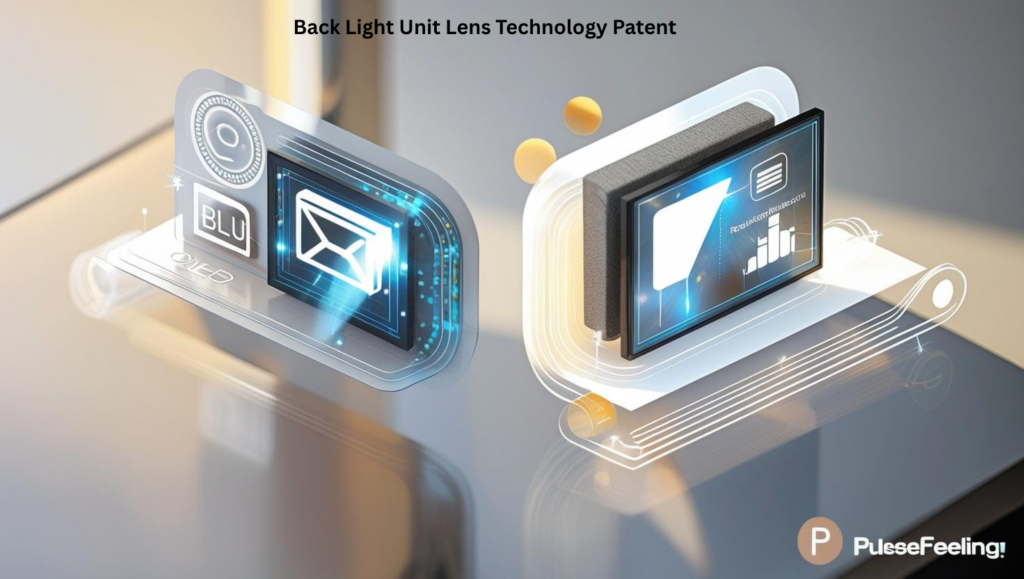Introduction
The display technology landscape is quickly developing, with two crucial contenders: Back Light Unit Lens Technology Patent and OLED. Both have special benefits, but selecting the right one in 2025 depends on factors such as performance, orders, and application.
Back Light Unit Lens Technology Patent increases traditional LCD screens by better brightness, color accuracy, and energy efficiency through modern lenses and light diffusion systems. On the other hand, OLED (Organic Light-Emitting Diode) technology provides self-emissive pixels, allowing ideal blacks and high contrast ratios.
As we move into 2025, choosing the right display technology is key for industries ranging from buyer electronics to automotive displays. This article contraststhe BLU Lens Tech Patent
and OLED, helping you decide which is the best choice for your needs.
Understanding Back Light Unit Lens Technology Patent
How Does Back Light Technology Improve Display Performance?
The Back Light Unit Lens Technology Patent optimizes LCDs by refining how light is distributed across the screen. Dissimilar standard backlight systems that rely on simple diffusers, this patented technology utilizes micro-lens arrays and modern light-guiding plates to increase brightness uniformity and lower strong utilization.
Key Features of Back Light Unit Lens Technology Patent in Modern Screens
- Higher Brightness & Efficiency: By reducing light leakage, the BLU Lens Tech Patent confirms better luminance with lower energy use.
- Improved Color Accuracy: Modern light circulation techniques offer extra consistent color duplication.
- Thinner Displays: The optimized plan permits for slender screens without offer up presentation.
Comparison with Traditional Backlight Systems
Traditional backlight systems often suffer from uneven brightness and higher power consumption. The BLU Lens Tech Patent addresses these matters, making it a higher selection for high-end detectors, TVs, and automotive displays.
What is OLED Technology?
How OLED Displays Function
OLED screens consist of an organic combination that emits light when an electric current passes through them. dissimilar to LCDs, OLEDs do not need a backlight, allowing for thinner panels and ideal black levels.
Key Benefits of OLED Screens
- Infinite Contrast Ratio: Each pixel emits its light, allowing true blacks.
- Faster Response Times: Perfect for gaming and quick-moving content.
- Flexibility: OLED panels can be made bendable or rollable.
Despite these benefits, OLEDs face challenges such as burn-in and higher production costs.
Back Light Unit Lens Technology Patent vs OLED: A Technical Comparison
Display Quality: Which Offers Better Brightness and Color Accuracy?
- BLU Lens Tech Patent excels in brightness, making it ideal for HDR content and outdoor visibility.
- OLED provides superior contrast and deeper blacks but may struggle with peak brightness in direct sunlight.
Back Light Unit Lens Technology Patent vs OLED: Power Efficiency and Longevity ✅
- The BLU Lens Tech Patent is more energy-efficient for static content, as it dynamically adjusts backlight zones.
- OLED consumes less power for dark scenes but may degrade over time due to organic material wear.
Which Technology Performs Better for Gaming and Multimedia?
- OLED’s fast answer time and high contrast make it special for gaming.
- However, the BLU Lens Tech Patent lowers motion blur and provides superior sustained brightness, making it aggressive for high-refresh-rate gaming.
Why is Back Light Unit Lens Technology Patent Gaining Popularity?
Discuss Patent Advancements and Future Potential
Recent innovations in the BLU Lens Tech Patent have led to better mini-LED and micro-LED integration, enhancing performance while keeping costs lower than OLED.
How Major Tech Companies Are Adopting This Technology
Main brands include the BLU Lens Tech Patent in premium TVs, monitors, and automotive displays due to its performance and order.
Which Technology is More Suitable for Your Needs?
- The BLU Lens Tech Patent is perfect for users who require high brightness, energy efficiency, and long-term longevity, making it ideal for watch and outdoor displays. OLED, however, suits those prioritizing great blacks, vibrant colors, and smooth designs, shining in premium TVs and smartphones. Your selection hinges on usage and budget.
BLU Lens Tech Patent in Mini-LED and Micro-LED Screens
The BLU Lens Tech Patent increases Mini-LED and Micro-LED displays by better local dimming, brightness control, and strong order. This makes them competitive against OLED, providing great HDR presentation and lower blooming, mainly in high-end TVs and expert monitors where precise backlight power is critical.
Is BLU Lens Tech Patent the Future of Display Tech?
The Back Light Unit Lens Technology Patent is emerging as an alarming challenger to OLED, especially in requests where brightness, longevity, and cost are prioritized. While OLED is leaving the gold quality for premium buyer electronics due to its ideal blacks and smooth form factors, the BLU Lens Tech Patent
provides notable advantages in large-format displays, trade signage, and automotive screens where high brightness and longevity are critical. With the promotion of Mini-LED and Micro-LED backlighting, this technology delivers great HDR presentation with minimal blooming, making it perfect for professional detectors and high-end TVs. crucial manufacturers are progressively adopting this patented solution, advising it will play a crucial role in the future of display technology, mostly in sections where OLED’s restrictions, like burn-in and higher costs, remain a concern. As R&D stays with, the BLU Lens Tech Patent
could bridge the gap between LCD and OLED, providing a level mix of presentation, affordability, and change.
Conclusion
Both Back Light Unit Lens Technology Patent and OLED have their strengths. In 2025, the best option hinges on your particular needs
Whether it’s great brightness and order, matchless contrast, and pliability.
FAQs
1. What makes the Back Light Unit Lens Technology Patent better than traditional LCDs?
It improves brightness uniformity, color accuracy, and energy efficiency through advanced lens systems.
2. Does OLED last longer than BLU Lens Tech Patent displays?
OLED may suffer from burn-in, while the BLU Lens Tech Patent
Screens have longer lifespans for static content.
3. Which is more affordable: BLU Lens Tech Patent or OLED?
The BLU Lens Tech Patents are generally more cost-effective, especially for large displays.
4. Can BLU Lens Tech Patent
Match OLED’s black levels?
No, but it compensates with higher peak brightness and better outdoor visibility.
5. Will BLU Lens Tech Patent replace OLED?
Not completely, but it will control in requests where brightness and longevity are judgmental.
By understanding these technologies, you can make a knowledgeable resolution in 2025!



